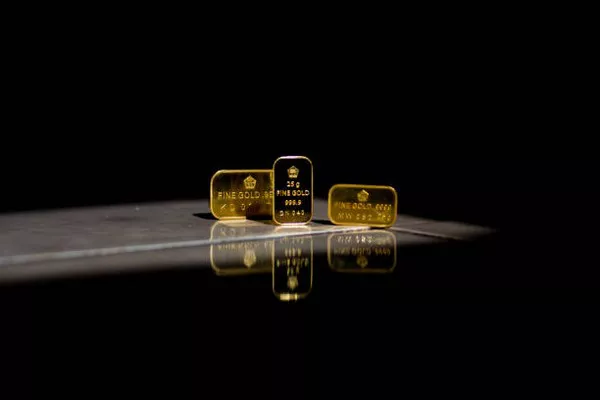Gold has been a symbol of wealth, beauty, and value for centuries. Its enduring allure has made it a popular choice for jewelry, investments, and decorative objects. However, the high value of gold has also made it a target for counterfeiters and fraudsters. Detecting fake gold is essential, whether you are buying jewelry, coins, or bars, to ensure you are getting what you paid for. In this comprehensive guide, we will explore various methods and techniques to help you determine if gold is genuine.
Conduct a Visual Inspection
The first step in identifying fake gold is to conduct a visual inspection. Genuine gold often exhibits certain characteristics that can be observed with the naked eye:
a. Color: Gold has a distinct, rich yellow color that is difficult to replicate. Fake gold may appear too shiny or have a different shade of yellow.
b. Consistency: Gold is known for its consistent color and texture. Fake gold may have variations in color or texture, such as uneven spots or rough patches.
c. Hallmarks and Stamps: Authentic gold jewelry and coins often come with hallmarks or stamps that indicate their purity and authenticity. Check for these markings, but be aware that counterfeiters may also replicate them.
d. Weight and Size: Genuine gold items should have a weight and size consistent with their stated purity. Be cautious if an item feels unusually light or small for its purported gold content.
Use a Magnet
Gold is not magnetic, so one simple way to check for authenticity is to use a magnet. If a piece of gold jewelry or a coin is attracted to a magnet, it is likely fake or has a significant amount of other metals mixed in. Keep in mind that some counterfeiters use non-magnetic materials to mimic gold, so this method may not be foolproof.
Perform a Density Test
Gold is a dense metal, and its density can be used as an indicator of authenticity. You can perform a simple density test using water displacement:
a. Fill a container with water and record the water level.
b. Carefully submerge the gold item in the water.
c. Measure the change in water level after the gold item is submerged.
Real gold will displace a specific volume of water, which can be used to calculate its density. Compare the calculated density with the known density of gold (19.32 grams per cubic centimeter). If the densities match closely, the gold is likely genuine.
Conduct a Scratch Test
Gold is a relatively soft metal, so it can be scratched with ease. You can perform a scratch test to determine the authenticity of gold:
a. Find an inconspicuous spot on the gold item and gently scratch it with a sharp object.
b. Observe the scratch carefully. If the scratch leaves a mark that is easily visible or if the gold begins to flake or peel, it may be fake.
Keep in mind that this test may damage the item, so it should be used as a last resort when other methods are inconclusive.
Seek Professional Appraisal
When in doubt about the authenticity of a gold item, it’s advisable to seek the expertise of a professional appraiser or jeweler. These experts have specialized tools and knowledge to accurately assess the purity and authenticity of gold. They can also provide you with a certification or appraisal document that verifies the item’s authenticity.
Perform an Acid Test
Acid testing is a widely used method to determine the purity of gold. This test involves applying different concentrations of nitric acid to a small scratch on the gold item. Here’s how it works:
a. Create a small scratch on an inconspicuous part of the gold item.
b. Apply a drop of nitric acid to the scratch.
c. Observe the reaction:
If the gold item does not react or discolor, it is likely genuine gold.
If the gold item turns green, it may be a lower purity gold or a gold alloy.
If the gold item dissolves completely, it is likely a fake or gold-plated item.
It’s important to handle nitric acid with caution, as it is a corrosive substance. Use appropriate safety precautions, such as wearing gloves and working in a well-ventilated area, when performing an acid test.
Check for Hallmarks and Certificates
Legitimate gold items often come with hallmarks, certificates of authenticity, or documentation of their purity and origin. These markings and documents can provide valuable information about the gold’s authenticity. Be sure to verify the authenticity of these documents as well by consulting with experts or doing further research.
Beware of Common Gold Frauds
Counterfeiters use various methods to create fake gold items. Here are some common gold frauds to be aware of:
a. Gold-Plated Items: Some items are only coated with a thin layer of gold, making them appear genuine. These items are often referred to as “gold-plated” or “gold-filled.” Scratching the surface may reveal the underlying metal.
b. Gold Alloys: Gold can be alloyed with other metals to create different colors and properties. Be cautious when purchasing gold items that are not pure gold, as their value may be lower.
c. Tungsten Core: In some cases, counterfeit gold bars may have a tungsten core with a thin layer of gold on the outside. Tungsten has a similar density to gold, making it difficult to detect without specialized equipment.
Conclusion
Determining the authenticity of gold is a crucial skill for investors, collectors, and anyone interested in purchasing gold items. While counterfeiters continue to find new ways to deceive buyers, a combination of visual inspection, density tests, acid tests, and professional appraisal can help you make informed decisions and protect yourself from fake gold. Remember to exercise caution when purchasing gold items from unfamiliar sources, and always verify the authenticity of hallmarks and certificates. By following these guidelines, you can confidently identify genuine gold and avoid falling victim to fraudulent schemes.


